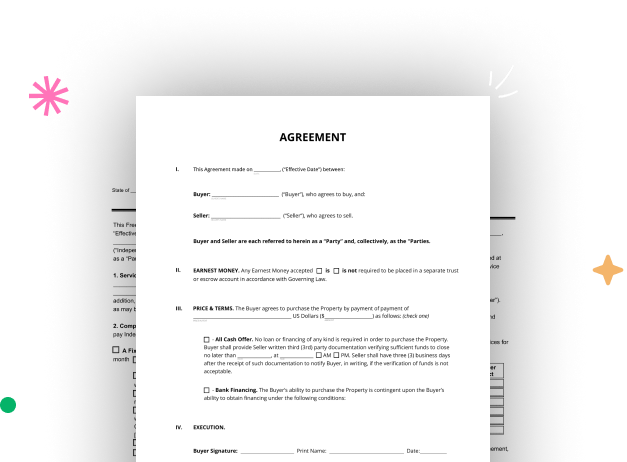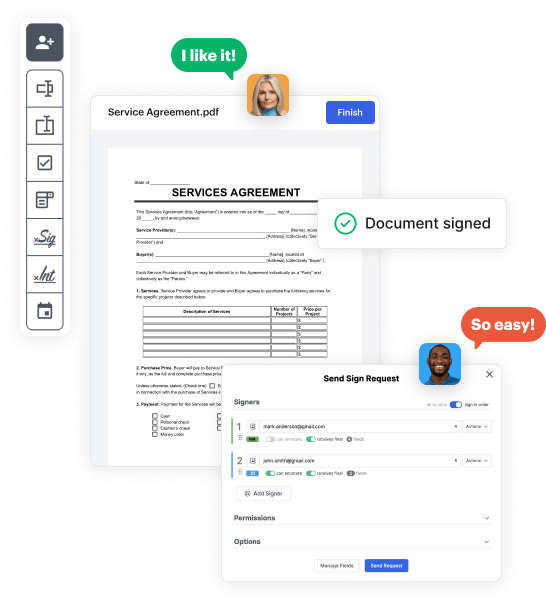

First, log in to your DocHub account. If you don't have one, you can simply register for free.
Once signed in, go to your dashboard. This is your central hub for all document-focused processes.
In your dashboard, select New Document in the upper left corner. Opt for Create Blank Document to design the HR Compliance Form from scratch.
Add different fields like text boxes, photos, signature fields, and other interactive areas to your form and assign these fields to certain recipients as needed.
Customize your document by adding guidelines or any other vital details utilizing the text option.
Thoroughly check your created HR Compliance Form for any discrepancies or required adjustments. Take advantage of DocHub's editing features to fine-tune your document.
After finalizing, save your copy. You may opt to keep it within DocHub, transfer it to various storage platforms, or send it via a link or email.